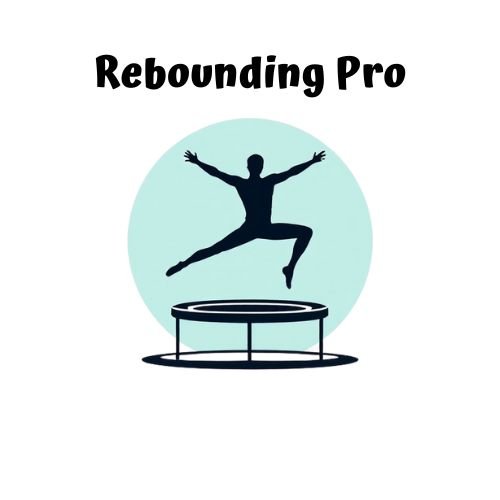Trampoline exercise therapy transforms your brain in three powerful ways. First, it triggers significant dopamine release, rewiring reward pathways without depleting overall levels. Second, it enhances proprioceptive intelligence by strengthening connections between your cortex and cerebellum. Third, it promotes emotional regulation through consistent sensory input and neural pathway development. These neurological benefits make trampolining especially effective for those with sensory processing disorders, ADHD, and other neuro-diverse conditions. Discover how a simple bouncing routine can revolutionize your neurological health.
3 Brain-Changing Effects Of Trampoline Exercise Therapy

While many people view trampolines as just recreational equipment, they actually offer remarkable neurological benefits that can transform brain function. When you bounce, your brain receives intense proprioceptive input that enhances muscle coordination and joint position awareness.
Trampolines deliver powerful neurological stimulation, transforming coordination abilities through proprioceptive input with each bounce.
This dynamic movement stimulates multiple neural pathways simultaneously, helping your nervous system develop more efficiently. For children, this means improved position sense, visual processing, and spatial awareness. Trampolines are particularly beneficial for individuals with neuro-diverse needs, providing sensory regulation opportunities that can help with conditions like Autism and ADHD.
For those with neurological disorders, trampolines provide a unique therapy environment that can enhance mobility through the rebound motion. The alternating weightlessness and pressure you experience while bouncing activates various sensory systems, potentially reducing sensory overload while promoting calmness.
Your brain must constantly adapt to the changing forces, creating new neural connections that support both physical and cognitive development.
Dopamine Boost: How Rebounding Rewires Neural Pathways
Every time you bounce on a trampoline, your brain experiences a remarkable surge of dopamine that fundamentally changes your neural chemistry. This neurochemical release occurs through BDNF/TrkB signaling in your striatum—the same mechanism observed in other forms of exercise.
What makes rebounding unique is how it triggers evoked dopamine release throughout your striatum without depleting total dopamine content. This means you’re rewiring your reward pathways with each session, improving dopamine receptor availability and circulation. Studies show that exercise-induced enhancement persists even after a week of rest, demonstrating the long-lasting neurological benefits.
The benefits extend beyond the moment. Regular trampoline exercise strengthens dopaminergic pathways through enhanced synaptic plasticity, potentially alleviating symptoms of neuropsychiatric disorders.
For those with Parkinson’s, this activity can reduce dependency on medication while promoting long-term motor function improvements through dopamine system remodeling.
Proprioceptive Intelligence: Balancing Acts and Brain Development

Proprioceptive intelligence represents another dimension of trampoline exercise that extends beyond neurochemical benefits.
When you bounce, muscle spindles and joint receptors transmit real-time position data to your brain, triggering instant movement adjustments. This continuous feedback loop strengthens connections between your cortex and cerebellum, enhancing both static and dynamic balance.
The repetitive deep pressure stimulation activates proprioceptors throughout your body, promoting self-regulation and improved focus. The proprioceptive feedback received during trampoline activity simultaneously informs emotional states and bodily needs in real-time.
Your brain’s limb position mapping becomes more efficient with each session, reducing sensory-seeking behaviors common in processing disorders. The cross-lateral movements stimulate bilateral brain integration, while the heavy work effect engages weight-bearing joints to refine your body schema.
This proprioceptive recalibration directly impacts developmental milestones, from early body awareness to executive function improvements and enhanced social participation.
Frequently Asked Questions
Can Trampoline Therapy Reverse Neurological Damage in Adults?
While trampoline therapy can improve your balance and motor functions through sensory stimulation, it’s not proven to reverse neurological damage. It’s more effective for managing symptoms and aiding rehabilitation than reversing severe damage.
How Long Before Cognitive Benefits Become Noticeable From Regular Rebounding?
You’ll likely notice cognitive improvements from rebounding within 3-8 weeks. While direct cognitive benefits aren’t extensively quantified, your mental clarity may improve alongside physical gains from regular 30-minute sessions 3-4 times weekly.
Are Trampoline Benefits Different for Children Versus Adults?
Yes, trampoline benefits differ between age groups. You’ll see children develop executive functions and motor skills, while you’ll experience bone density improvements and stress reduction as an adult. Both gain neurological advantages though.
Can Trampoline Therapy Help With Post-Stroke Rehabilitation?
Yes, trampoline therapy can greatly help your post-stroke rehabilitation. You’ll experience improved balance, mobility, and walking ability. It builds your confidence, prevents falls, and offers an accessible, cost-effective addition to conventional physical therapy.
Does the Size or Type of Trampoline Affect Neurological Benefits?
Yes, trampoline size and type matter for your neurological benefits. Mini-trampolines excel for balance training while larger ones support dynamic mobility. Models with handrails offer safety advantages for those with significant neurological impairments.
In Summary
You’ve now discovered the powerful neural benefits of trampoline therapy beyond just physical fitness. When you’re bouncing, you’re actually rewiring your brain, flooding it with mood-enhancing dopamine, and developing sophisticated proprioceptive intelligence. Don’t underestimate these simple bouncing sessions—they’re transforming your neurological landscape with every jump. Your brain craves this unique combination of movement, balance, and joy that traditional exercises simply can’t deliver.





Leave a Reply